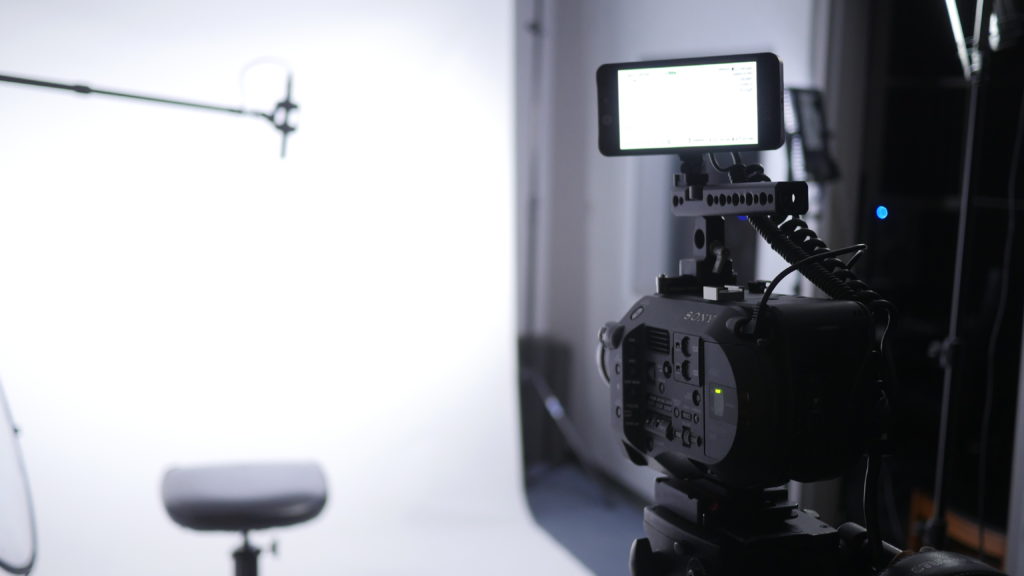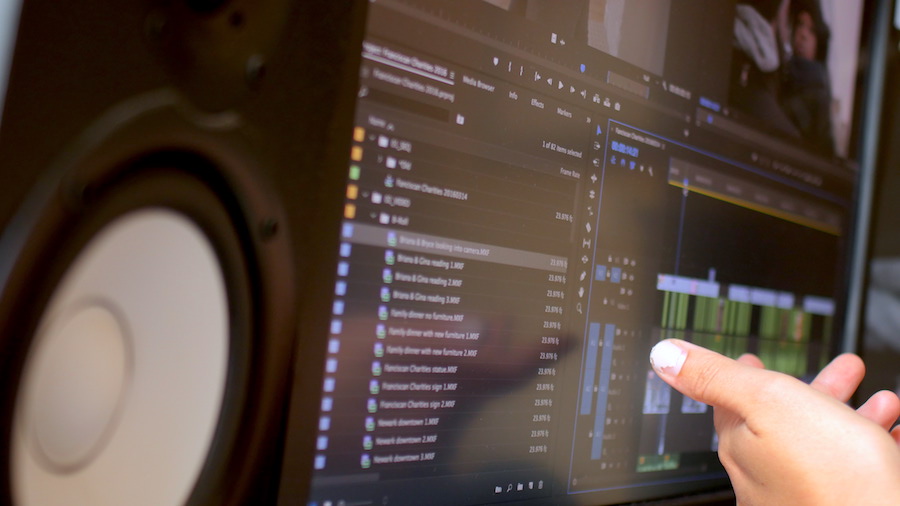The idea of assigning a “process” to creative work might seem limiting. But over the years we’ve honed a production process that liberates strong storytelling to the benefit of our clients. Below, we’ll share a little bit about our production process in part 2 of our 3-part series on working with a production company.
Pre-production
Understanding Your Objective
Our production process is made up of three stages, the first of which is pre-production. During this stage, we work with our clients to identify their goals and audience. Who are they are speaking to, why, and what outcome do they want? With some clients, we’ll do a little market research to understand the needs of their audience. We want to know: What compels them to action? What obstacles stand in their way of understanding the mission? The more clearly we’re able to identify the client’s goals, audience and obstacles faced, the more effectively we can craft the story.
Casting Character & Story
Successful videos also depend on the work we do casting character and story. We work with our clients to identify an individual or individuals who have truly benefited by the work they do, directly or indirectly. This has to be authentic, not coerced or manipulated in any way. We need to find people whose lives have been fundamentally changed. The good news is that this is easier to find than it may seem because our clients really do change lives. Once we’ve identified a few potential characters, we try to determine if there’s an emotional, visual story that’s happening in real-time. While most of the videos we produce for clients are short in form and limited in production days, the most powerful stories are those we can “show, not tell.” We won’t be able to capture the full trajectory of their story in just a few days, but we need more than just exposition or backstory. We want to show an active present and a hopeful future. At times this can be crafted in the edit, but more often than not, we need to plan to capture it. Finally, to narrow the options, we look for someone who has that ineffable onscreen quality, which I’ve written about before on the blog. Sometimes clients already have their film subjects selected when they come to us, for example individuals they may be honoring with an award. In those projects, we still look for visual and authentic opportunities to film.
Writing a Treatment
We use this information to craft a treatment, which is a written envisioning of how the video will play out on screen. A treatment is not a script, but rather a guideline for production. It helps set the stage for the stylistic approach and what we might see and hear in the video. This helps us as producers to carefully plan our production time so that we capture all the pieces we need to build the story. It also serves as a useful tool for our clients and their stakeholders. Lines from a character may be fabricated in advance for the purpose of the treatment, but serve as a prompting tool for our clients to inform us of the nuances in the communication surrounding their organization. For example, they might make notes in a treatment: “we like the sentiment of this sentence, but be sure she clarifies this…” Or, “I like this scene but we want to make sure it doesn’t imply…” These notes are incredibly helpful to us as we prepare questions for our interviews and respond to scenarios in the field.
Logistics
We never want disorganization to derail the work we’ve done gaining access to a good story. So the last stage of the pre-production period is dedicated to the tedious but important task of logistics. Logistics include ensuring access and permits to film specific locations, booking travel, confirming a realistic but efficient production schedule, coordinating with the film subjects, developing a shot list and questions.
Production

An effective pre-production period lends to a successful production, the second stage of our process. We use the treatment, production schedule, shot list and questions to capture the story during one day or a series of days. Despite the planning we’ve undergone, there are inevitable changes. In nearly every project, the treatment as we wrote it becomes altered in reality. Fortunately, the changes are often for the better. A character responds to questions with more emotion than we could have imagined, or a scene proves more visually engaging. Over the years, we have a developed a good sense for which story diversions can be good and which may draw us away from the original goals of the video. Behind the camera and headphones, we’re looking and listening for opportunities that evoke emotion and reveal something about the character. It may not look or sound exactly like what we planned, but the tone of the scene matches what we we’re seeking. Often these decisions are made on the spot, but we do communicate any deviations with our clients.
Story is paramount, but cinematic language is the way we tell it. Each film and video requires a different approach, but it should always be intentional. And while we strongly value what tools the latest technology can offer, we’re careful to only employ fancy gadgets when it advances the story. A moving dolly or steady-cam might perfectly capture the energy of a sporting event, but not a quiet moment in someone’s home where a locked-down shot might be a better visual approach.
Post-Production

Back at our studio, we copy and log footage in the edit suite, send audio of the interviews to be transcribed, and begin to craft the story. We start by scripting on paper, then compose scene selects and string-outs in the edit. A “Rough Cut” emerges from that work, which we send to clients for review. As the name implies, this cut will be longer than the final version, have some rough scenes, transitions that still need finesse, and be missing final music, graphic and titles. At this stage, we ask our clients to assemble all decision-makers that were present during the pre-production period to craft one single stream of feedback. We ask for feedback that serves to diagnose the problem, such as “I was confused at this moment” or “emotion was lacking at the end” rather than offering prescriptions, such as “move this scene” or “add some explanatory text here.” We’re better able to creatively solve issues by understanding what’s not working for the client than by trying to deduce it from specific suggestions for fixes. We use this feedback to return to the edit to remedy any issues and move toward a “Fine Cut”, which looks more like the final product but may need some tweaks and final color and sound. We send this cut to the client to see if the feedback has been addressed adequately and to send any final, hopefully more minor, notes. These are incorporated into the “Final Cut”, which includes all final music, titles, color and sound correction. Typically two rounds of feedback is sufficient, but we’re always open to discussing more rounds to be sure the client gets exactly what they need.
We hope this outline of the process we’ve developed is helpful as organizations, brands, and nonprofits think about commencing the production of a video. Check out part 1 of our series on crafting a video RFP and stay tuned for part 3 of this blog series in which we’ll discuss how to evaluate the success of your video.